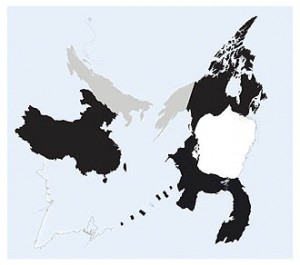
World may not be warming, say scientists
We concluded, with overwhelming statistical significance, that the IPCC’s climate data are contaminated with surface effects from industrialisation and data quality problems. These add up to a large warming bias,” he said.
The Uncertain Fate of the IPCC
Opponents of the Intergovernmental Panel on Climate Change tried strangling the IPCC in its cradle when the body was formed twenty-one years ago. Only hard-core climate change deniers are now sounding the death knell of their nemesis (as they have many times before), but support for the IPCC appears to ebbing, for a variety of reasons, and the future of the foremost science-based organization on climate change is in question.
‘Snowmaggedon' in Washington spurs climate change doubters
To be sure, the IPCC has been forced to acknowledge errors and unsubstantiated statements in one of its landmark 2007 reports. The irregularities had to do with predictions of the expected effects of warming. None of them, however, undermined the report's consensus that the planet has warmed and that man's activities have contributed to the warming.
Is global warming real? Do snowstorms offer eco-lessons?
“It's going to keep snowing in DC until Al Gore cries “uncle,”” Sen. Jim DeMint, R-S.C., wrote Wednesday on Twitter.
Phi Beta Iota: The media is not doing its homework. The IPCC represents the worst of UN corruption and ineptitude, while the High Level Panel and its report represents the UN at its best. In the latter, Environmental Degradation is threat #3 after Poverty and Infectious Disease. Climate Change is less than 10% of Environmental Degradation, and within Climate Change, carbon emissions are much, much less than 10% and far outweighed by sulfer and mercury. The media and the UN both gloss over the many acts of man, such as paving over the Mississippi wetlands and plowing deep roots into oblivion–the increasing frequency and severity of storms is most certainly man-made but NOT caused by exclusively global warning or carbon emissions. See also Strategic Analytic Model. It's all connected.











